Why is creating electronic canes for the blind so hard?
People who are visually impaired know what works for them and what doesn’t. They’d rather innovate their own technologies.
Listen 11:23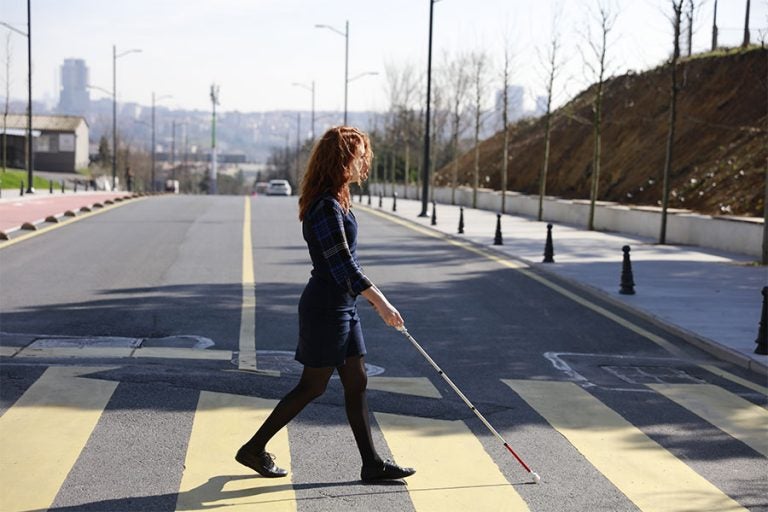
For decades, inventors have tried to re-engineer the standard white cane used by people who are blind or visually impaired. But it's a tricky task. (Image courtesy of WeWALK/Kürşat Ceylan)
If you’ve encountered someone who is visually impaired walking down the street, you might have noticed that person using a particular kind of cane: one that’s white, sometimes with a red band.
It’s white to make it very visible, and to signal to others that the user can’t see.
For more than 50 years, people have tried to re-engineer this cane. There have been more than 100 “smart” cane inventions — attempts to build a cane that can detect obstacles and perform other functions electronically.
There’s the UltraCane, the K Sonar, the C-5 Laser Cane … and the list goes on. But none of these have come close to replacing the standard white cane.
Maybe it has to do with cost. Smart canes can run anywhere from $100 to upwards of $1,000, while a standard white cane typically costs $20 to $60.
Or, maybe, the engineers designing these smart canes don’t fully grasp the experiences and the needs of those who are blind. As a result, they often end up building devices that introduce more complications to the user, interfere with the white cane’s natural dynamics, or otherwise miss the mark.
Room for improvement
People who are visually impaired have used sticks and staffs as travel aids for centuries, but the white cane was formally introduced in the 1920s and ’30s, as cars became more popular and roads became riskier for pedestrians. The white color stood out against dark pavement.
After World War II, caregivers started developing techniques to help blinded soldiers regain their independence. That gave rise to a whole new professional field, called orientation and mobility. By the ’80s, orientation-and-mobility training was being developed for children preschool-age and younger. In the United States today, it’s considered best practice to provide training as early as possible, even starting in infancy.
Around the world, the white cane has become a symbol of self-reliance and dignity for people who are blind. But it has its limits.
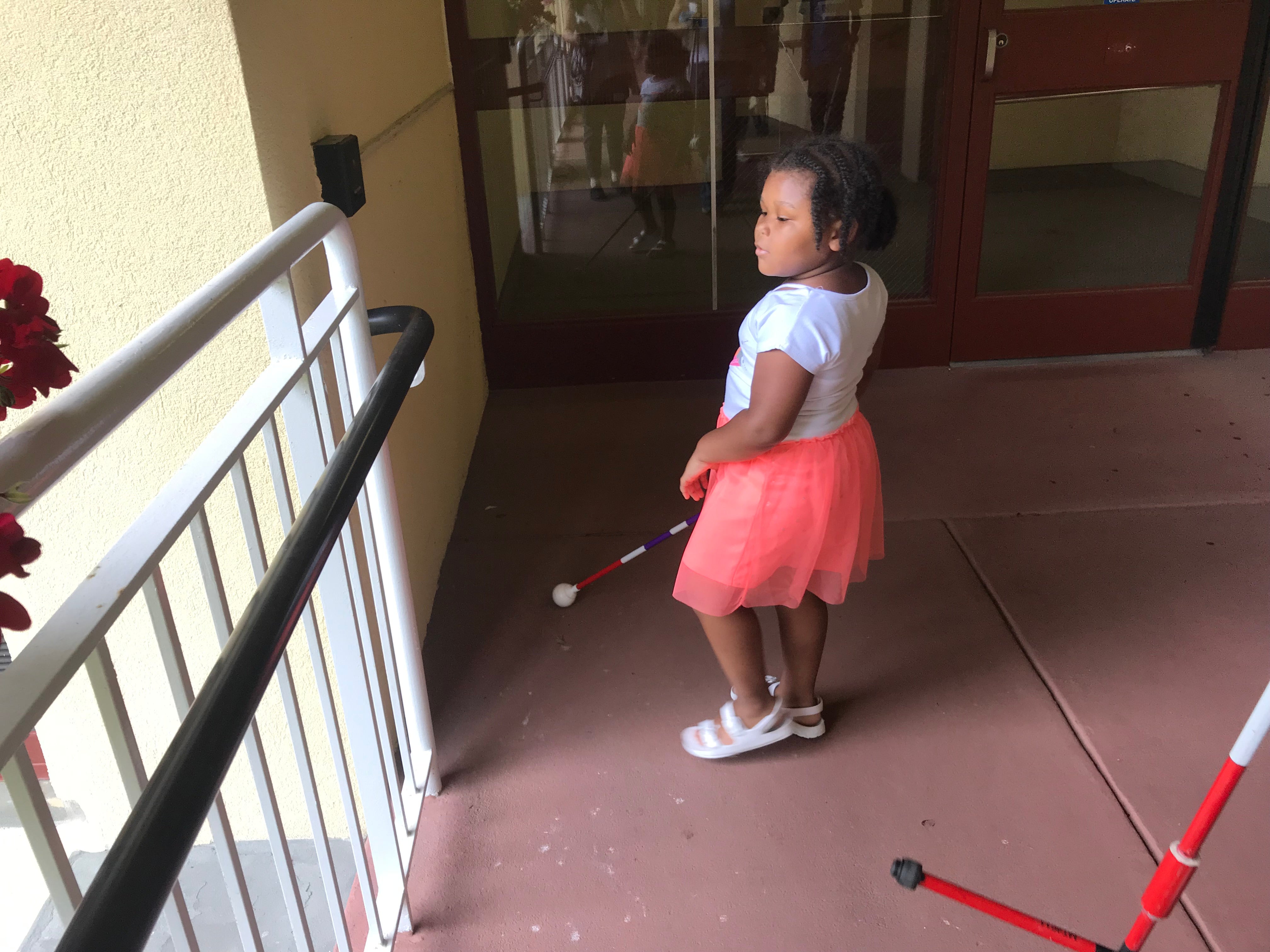
At the Overbrook School for the Blind in West Philadelphia, students shared their challenges using canes. (School officials requested that only their first names be used to protect their privacy.)
“Sometimes, I have trouble getting around certain people, or finding certain objects,” said Ethan, who is 17.
Big open spaces and drop-offs, like curbs and steps, can be hard, said Dauad, who is 14.
Kennedy, 5, said her cane gets caught on things, like grass or cracks in the sidewalk and pavement.
The white cane also can’t detect obstacles that are far away. It leaves the upper body vulnerable to overhangs, such as tree branches. And there can be a steep learning curve with it.

Maybe because of those challenges, only an estimated 2% to 8% of people who are visually impaired use white canes. The rest rely on other people, guide dogs, or their usable vision — about 85% to 90% of those who are blind or visually impaired actually have some low level of sight.
Could there be a better cane? One that more people want to use?
For decades, inventors have tried to use whatever new tech is out there — sonar, ultrasound, GPS, artificial intelligence — to improve the function of the plain white cane.
Shlomi Hanassy knows all about that. About a decade ago, he was a student, working in a lab at the Hebrew University of Jerusalem on a device called the EyeCane.
It used infrared rays to detect obstacles within 5 meters, and communicated with users through sound and vibrations. It was a promising technology — previous devices were slow at detecting and communicating obstacles.
But the EyeCane “was fast,” said Hanassy, who today owns his own technology research and development company in Jerusalem. “It was actually useful.”
Hanassy’s team showed that it took blind people less time to learn how to use the EyeCane than other devices. There was a lot of positive media coverage.
“It worked very well, and you can read a lot of articles that show that,” Hanassy said.
But good press aside, many people who are blind are skeptical of technologies invented by sighted people like Shlomi.
Why do we need this?
Daniel Kish, who lives in Southern California, feels he has no need for a smart cane. He’s been blind since he was a baby, when both of his eyes were removed because of a rare eye cancer called retinoblastoma. Very early on, he found his own way of getting around.
“I began clicking and developing my own form of sonar right after I lost my second eye,” Kish said.
He started using echolocation, or sonar vision. He would make sounds — usually by clicking his tongue, but sometimes also snapping his fingers or clapping his hands. And he’d listen to how the sound came back to him to get the texture, size and shape of objects.
Brain scans have found that when people like Kish use echolocation in lieu of sight, they’re actually using the visual cortex, the region of the brain that processes sensory information from our eyes.
“It’ll reconnect and rewire itself to wherever it needs to, to gather the data it needs,” Kish said.
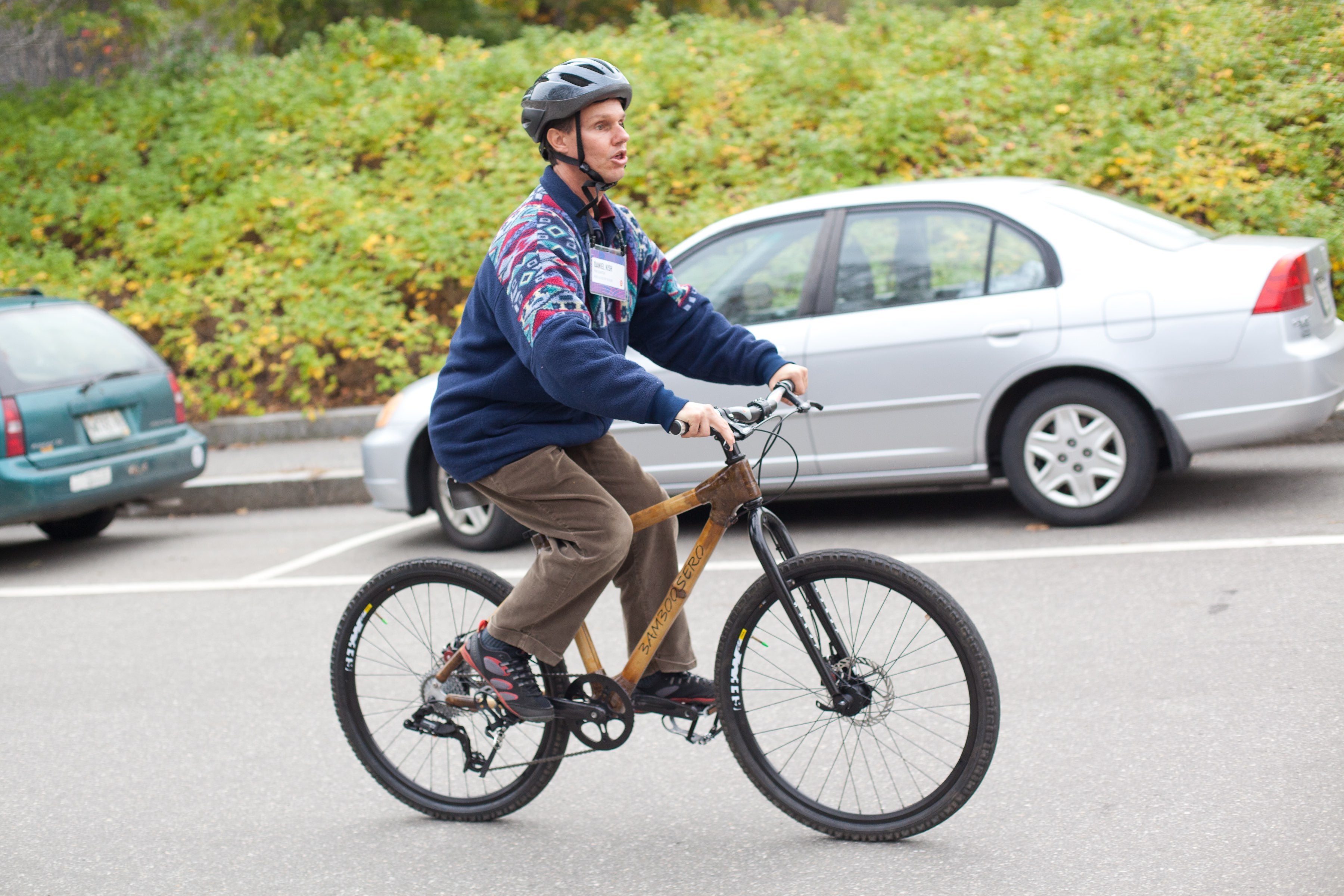
In his late teens, Kish wanted to go more places and do more things. So he learned to use a cane. And that helped even more — echolocating helped him with objects at head and shoulder level, and the cane took care of what was at his feet.
“My perceptual system became a kind of seamless dynamic,” Kish said. Today, he can sketch a room after clicking his way around it, ride a bike, and go on solo hikes. He’s even hiked the Swiss Alps alone.
In 2000, Kish started a nonprofit, called World Access for the Blind, to teach more blind people his method of echolocating with a cane.
A big part of the technique is allowing the cane to become an extension of oneself. He compared the cane to a rat’s whiskers.
“Rat’s whiskers have certain qualities,” Kish said. “They’re very delicate, they’re light, they’re flexible, they’re conductive. So we try to simulate that, if you will, with a cane. The lighter and more delicate the touch, the more information you’re able to receive.”
And that’s one of Kish’s main gripes with smart canes. He believes that when you start adding batteries, sensors and buttons, you start interfering with all that.
“One of the things that happens, of course, is you make the cane heavier, you change the balance of the cane,” he said.
While a regular white cane might weigh half a pound, a smart cane can weigh more than twice as much.
Furthermore, all of the additional sound and vibratory cues can be distracting. And electronics make a cane more difficult to maintain: You have to charge it; the technology can malfunction; and now the device is susceptible to weather and dirt.
Most importantly, Kish worries that fixating on electronics will shift focus away from building a good foundation in orientation and mobility. He wonders if the resources spent on tech might be better spent on cane training that really nurtures the skills for independence that blind people already have. After all, these are the skills they’ll always be able to fall back on.
Smart canes, he said, ignore the reality that “we can provide a kind of cane training that makes the cane basically a natural extension of the body, to where it is fluid and comfortable and, above all, effective.”
It matters who the inventor is
There are others, like Kürşat Ceylan, who want a better cane. Ceylan is a social entrepreneur from Turkey and has been blind since birth. He believes people who are blind should use available technology to their advantage. After all, corporations aren’t really thinking about visually impaired folks.
“Technology has advanced so much, but unfortunately this area is not seen so profitable for the big companies,” he said.
Ceylan has worked on many different technologies for the visually impaired, including a media platform, a navigation tool for shopping centers, and an interface that provides audio descriptions for movies.
His latest project is WeWALK, a new smart cane. It ultrasonically detects overhead obstacles. It also integrates with a user’s smartphone and syncs up with apps such as Google Maps or with Amazon’s Alexa.
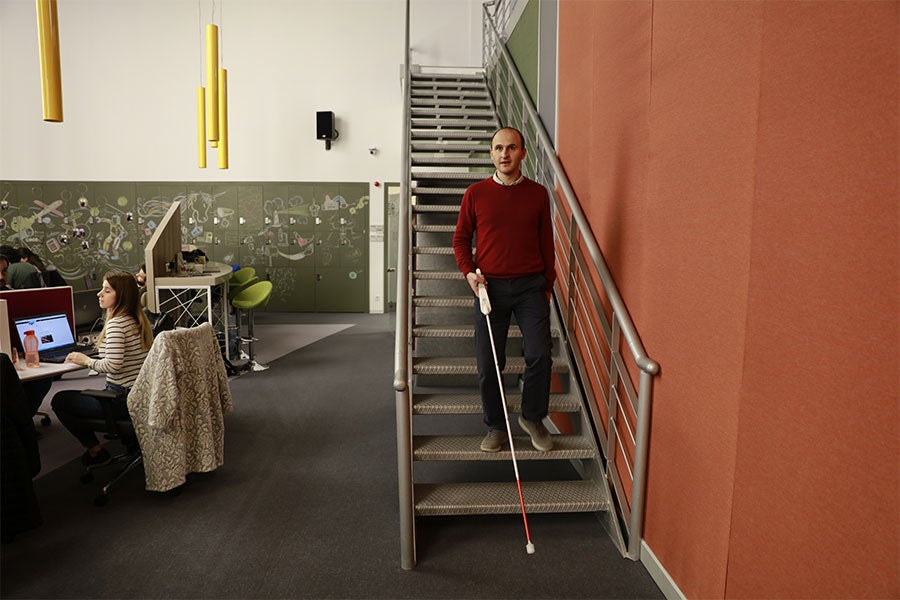
Ceylan said the effort arose from his own needs. “Do visually impaired people need improvements in their daily lives? Yes, I do,” he said. “At least I do.”
For example, Ceylan said, when he is waiting at the bus stop, he’s always asking other people to let him know when his bus, #43, arrives.
“Also, while we are walking in the street, we don’t know the name of the stores, or we don’t know the color of the traffic lights. And these are the problems that we have to solve,” he said. “Visually impaired people can be independent. We believe that.”
Ceylan acknowledged the points some blind people make against smart canes.
“They’re right,” he said. “Visually impaired people have to develop their independence skills. And that’s why they need the mobility training before using the cane.”
He noted that smart canes are, indeed, heavier than regular canes. But if a heavier cane imparts more confidence and independence, one might “prefer the heavier cane,” he said.
Kish, the echolocator, said it’s promising that more blind people are leading tech development. That makes a world of difference, he said.
“Historically, a lot of these technologies were developed by sighted people — you cannot understand blindness from a sighted perspective,” he said.
He added that sighted people make “guesses about not seeing, based on their understanding of seeing.” And often, what fuels those guesses are stigma, dread and anxiety.
“Most people are afraid of blindness,” he said. “They feel it’s among the top four worst things that can happen to them, right alongside of terminal illness, cancer and such.”
Much of the marketing around smart canes and other technologies preys on this fear, according to Kish.
“When you look at information that is presented around various technologies and devices, it very much emphasizes what the blind person cannot do, or won’t be able to do. So there is a very much kind of ‘we need to fix this’ mentality,” he said.
“I think that the whole perspective needs to be shifted from an assumption of deficit to an expectation of capacity,” he added.
Remember Shlomi Hannasy? The inventor in Israel who was working on the EyeCane? He eventually learned this his own way.
During the time he was working on the EyeCane, while on a run one day, he happened to come across a cat on the street. He named the cat Zeevon, took it home with him, and soon realized the cat was blind. Since he was already working on EyeCane, he got to work making a wearable device that would detect obstacles for Zeevon.
But he quickly realized the cat didn’t need such a gadget.
“As much as I wanted to help this cat, with time, I saw that it could manage by itself,” he said.
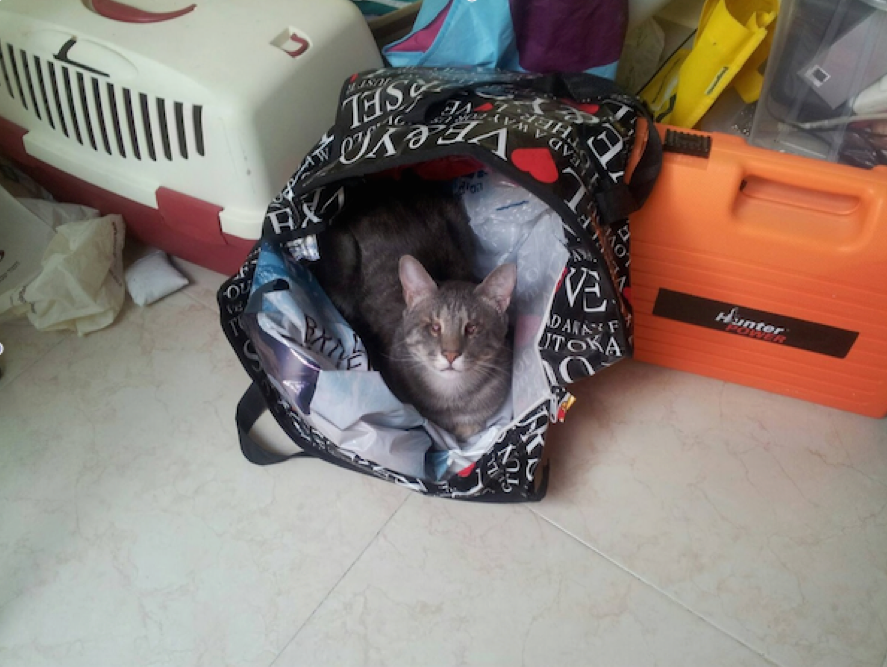
Zeevon was fine staying home alone. He deftly maneuvered around the furniture. He gracefully jumped from the kitchen counter to the top of the refrigerator.
The experience taught Hanassy a bigger lesson: that people who can see often miss the ways the blind adapt and develop their own ways of being in this world.
Sighted people don’t know how it is to be blind, Hanassy said. “We cannot understand, usually, the other senses so well.”
Hanassy believes that illustrates a broader problem with tech — that, too often, developers try to create solutions for others based on assumptions, without taking the time to understand people.
“They just develop the technology without considering what people really need,” he said.
In the end, Hanassy ditched his efforts to make a device for his cat. And despite several years of development, the EyeCane never took off.
WHYY is your source for fact-based, in-depth journalism and information. As a nonprofit organization, we rely on financial support from readers like you. Please give today.







